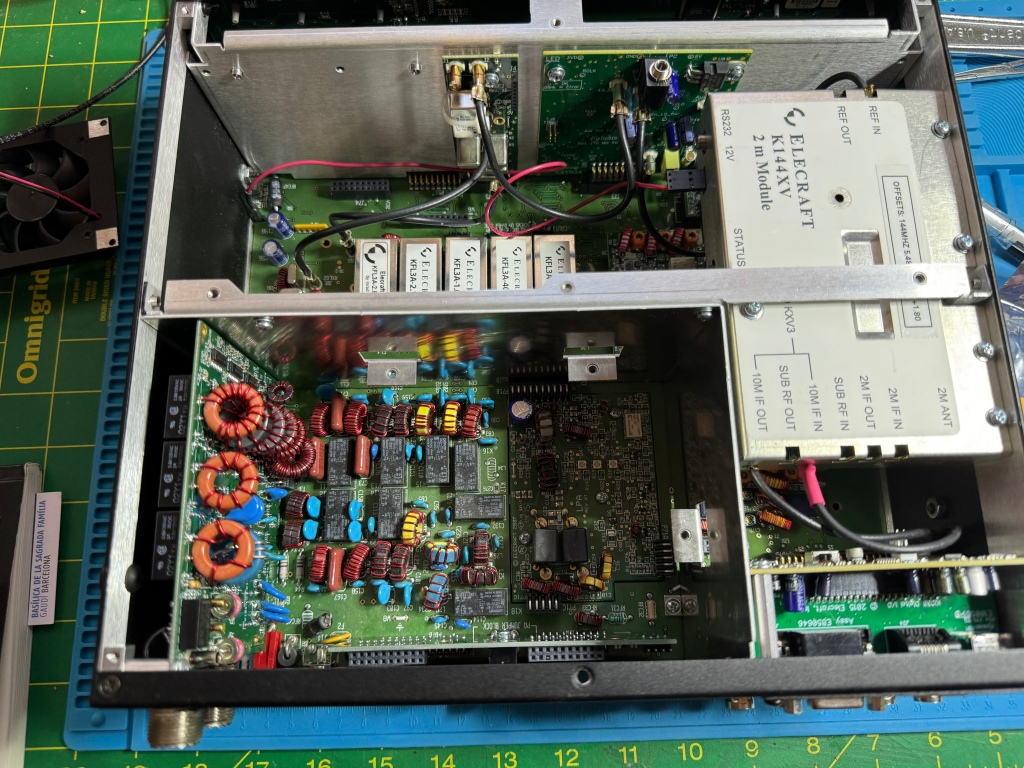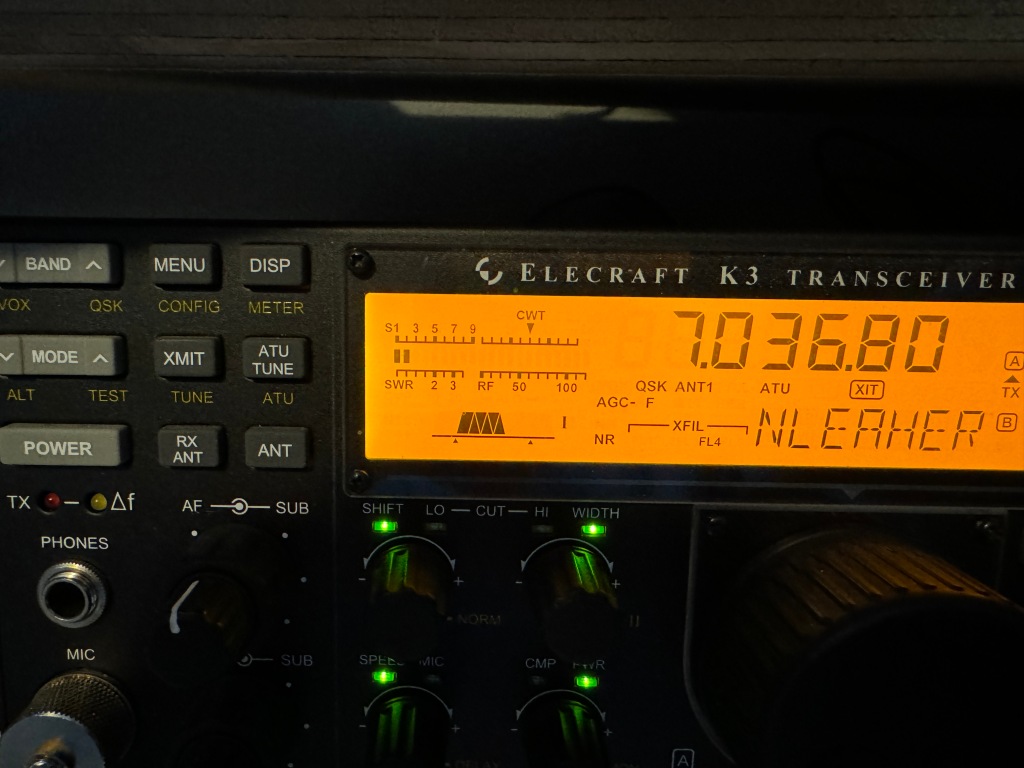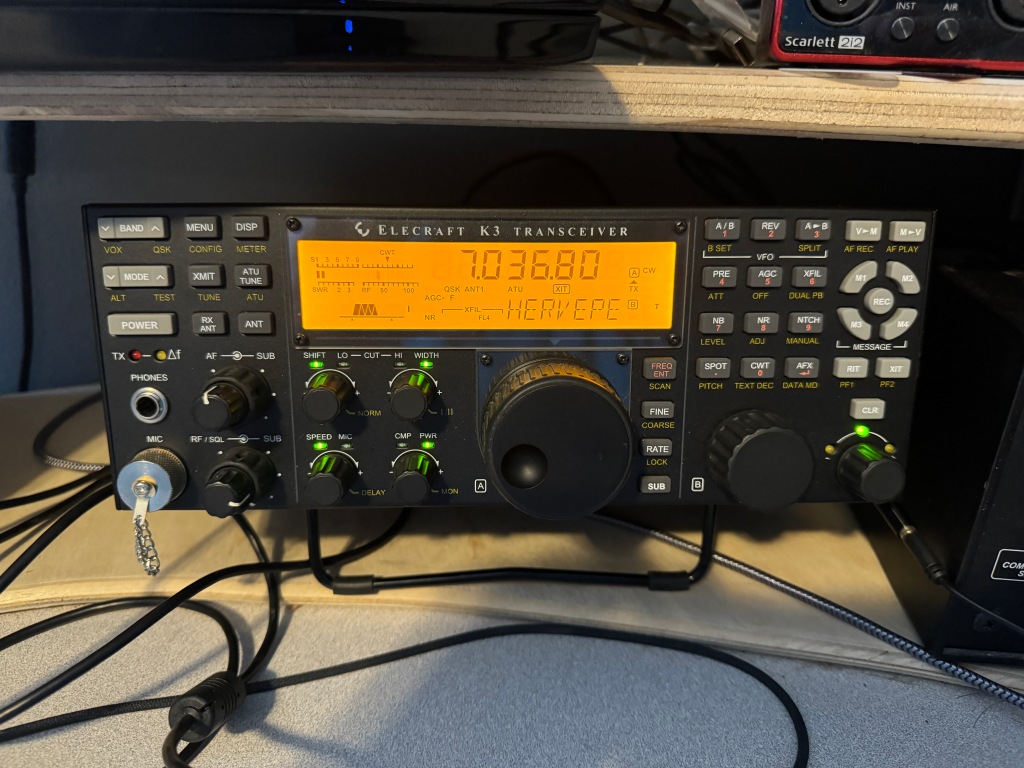I’m in the doldurms again – radio doldurms. This time it is due to my wife having a hip replaced. It happened quickly. She saw the doctor one day and a week later she had a new hip. Over the years, recovery times have decreased but there still is a recovery time. Each day she gets a little more steady on her feet. The caveat is, I still have to do a lot of things around the house. Yes, she is worth it.
I haven’t been on the radio much. I mostly turn it on to do some head sending for my CWI class and sometimes I listen to a QSO. I try to make my codebuddy skeds as long as everything else in the house is copasetic. I try to do some of the CWI exercises at night when things quiet down. I am still doing the things, at a slower pace.
I have goals I want to attain. While in the doldrums, I have switched from my bug to a singlepaddle/sideswiper. I also use paddles and I found it difficult switching from the bug to the paddles. The bug requires a heavier hand, especially on the dit side. You have to hit it a little harder to get the pendulum vibrating. A sideswiper has a similar feel to a paddle. One thing to note, is I cannot set the contacts on a sideswiper as close as I can on paddles. It tends to mush the dits and dahs together. I am currently using a KN4YB SL-85 sideswiper. It has a shorting bar so you can use it as a single lever paddle or a sideswiper.

One negative about using a single lever as a sideswiper is it bothers my arthritis. I have it in my fingertips and it can get painful after a while. I may switch to a cootie key that bends and softens the contact. I have spent most of my CW time with paddles using a keyer. I thought in retirement I would give a straight key a go. I have been practicing and I am using my code buddies as crash dummies. They report that I am doing a pretty good job. One of the reasons I am trying a straight key, is I have 4 nice county parks in my county that are not POTA regulation. My nearest POTA parks are about 45 minutes away. So I joined SKCC and when life gets a little more normal around here, I want to start working on SKCC from home and portable.
Another goal I have is to become more conversational in CW. I have close to 2,000 CW contacts in POTA but they are just exchanges. It’s the reason I am taking a CWI Class. I want to have pass-the-time-of-day QSOs on CW. Right now my code buddies and I are around the 20-25 minute mark for a QSO. We are operating around 17 wpm. POTA exchanges I can do at 22+ wpm.
The good thing about CWI is the end of the class is not the endgame. What CWI does is give you the tools to practice and teaches you how to use them. They teach you how to diagnose any problems you have and what tools to use to fix them. Even though I am a little behind right now, when my life returns to more normal, I will be able to continue my studies.
Finally, I wish to get my code speed up to 25-30 wpm. I am one of two CW ops in my club and usually do CW during the Field Days. I am okay at around 25 wpm or so when searching and pouncing however, I would like to be able to run and hold a frequency. Once life returns… I have plans to participate in some of the CW activities such as CWTest, and I may try for a CWOps number. That may be a ways a way.
That’s the long and the short of it. I hope to see y’all out there once QRV becomes more of a reality. 73 – Scott

















